#zambezi national park
Photo
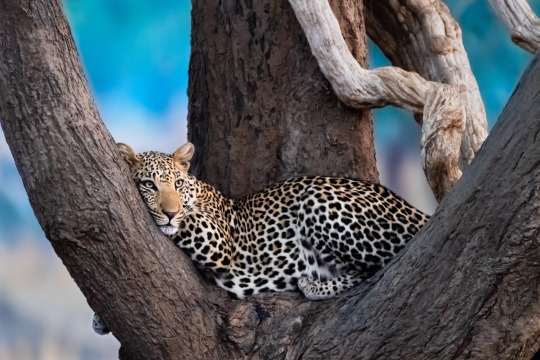
The right spot
Leopard - Lower Zambezi NP, Zambia.
Photographer: Pablo Sarasa Delgado
INTERNATIONAL PHOTOGRAPHY AWARDS™
#pablo sarasa delgado#photographer#international photography awards#leopard#lower zambezi national park#zambia#animal#mammal#wildlife#nature
39 notes
·
View notes
Link
The Bushlife Conservancy has been working tirelessly to curb poaching in Mana Pools National Park and the surrounding Zambezi Valley, Zimbabwe. Thanks to this hard work, they recently announced that Mana Pools National Park has been free of any elephant poaching incidents for three years.
Mana Pools National Park and World Heritage Site is one of Africa’s most renowned game-viewing destinations. It’s here that the floodplain of the Lower Zambezi River turns into a broad expanse of water after each rainy season attracting myriad wildlife as the flood recedes...
The Zambezi Valley has historically been plagued by rampant elephant poaching. Twelve thousand elephants have been poached in this area over the past ten years, and by 2014, elephant numbers had decreased 40% from 18,000 to 11,500...
Good relationships with and investment into local communities widens the intelligence network and operational footprint across the region. Between Akashinga and Global Conservation’s work on special investigations, there have been over 200 arrests made since 2017, helping to drive an 80% reduction in elephant poaching by 2019 across the entire Lower Zambezi ecosystem, home to one of the largest remaining elephant populations on Earth.
#elephant#conservation#conservation news#endangered species#poaching#ivory#zimbabwe#zambezi#national parks#good news#hope
30 notes
·
View notes
Text
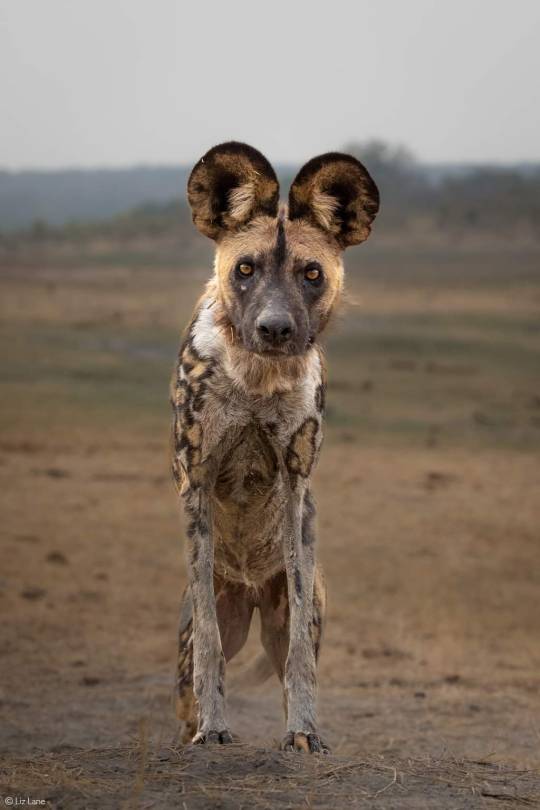
A curious African wild dog (painted wolf) approaches the photographer. Zambezi National Park, Victoria Falls, Zimbabwe. © Liz Lane
823 notes
·
View notes
Text
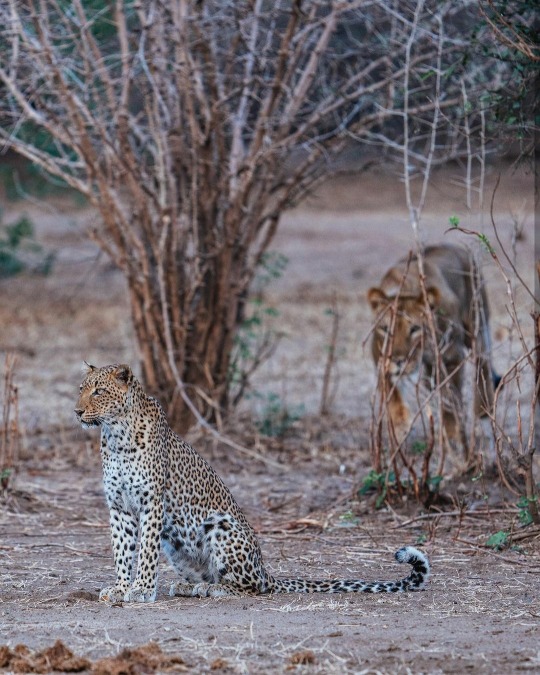
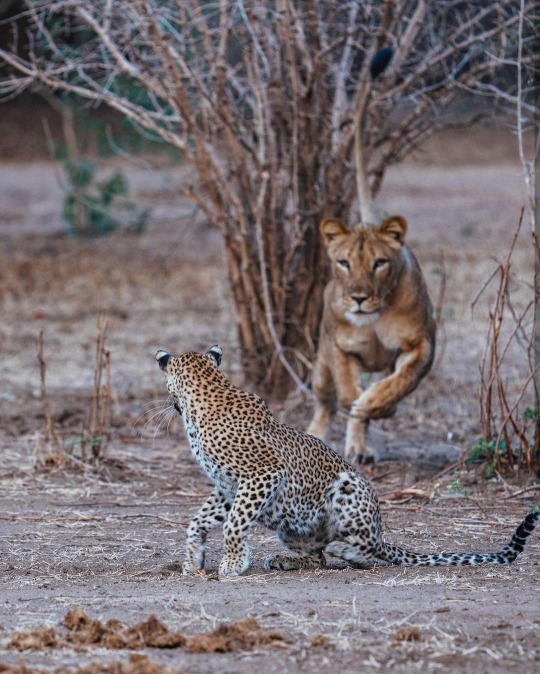
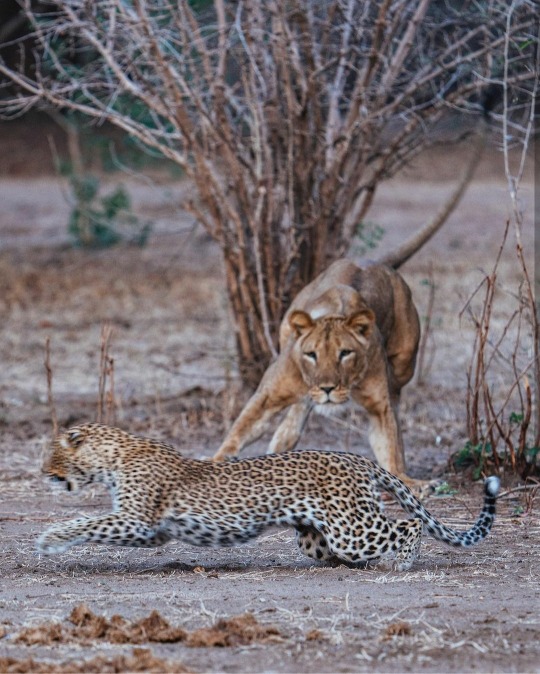
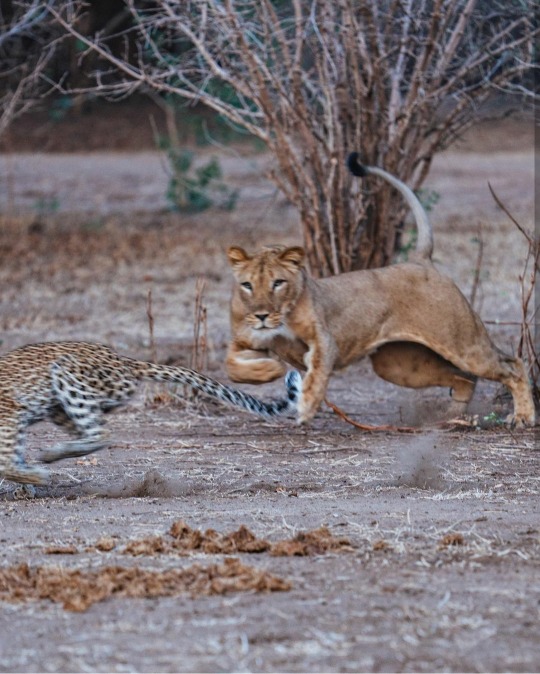

Lower Zambezi National Park, Zambia
Whew! That was close. (She escaped without a scratch.)
149 notes
·
View notes
Text
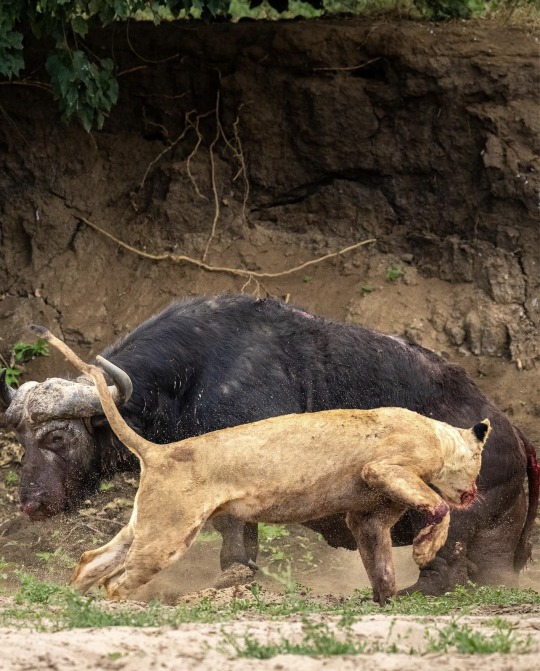
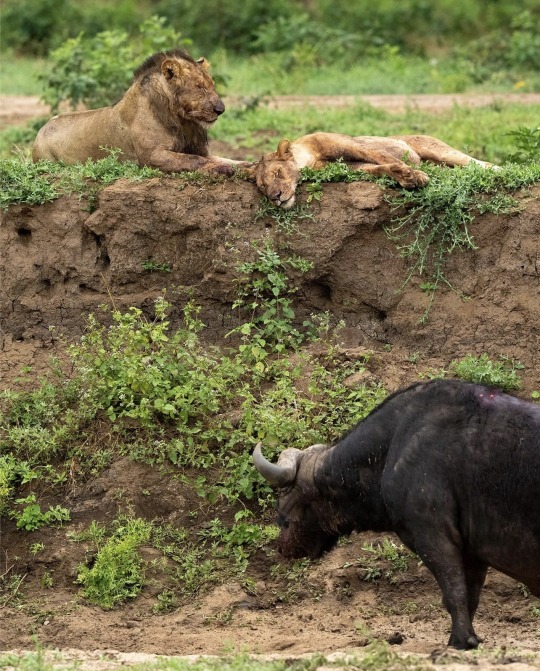
A dance between predator and prey
Photographed by Marlon du Toit
Lower Zambezi National Park, Zambia
45 notes
·
View notes
Text
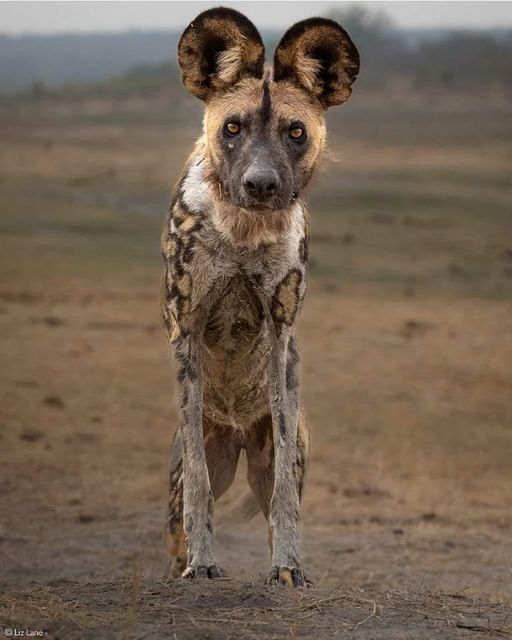
African Wild Dog aka African Painted Dog (Lycaon pictus), family Canidae, Zambezi National Park, Victoria Falls, Zimbabwe
ENDANGERED.
photograph by Liz Lane
125 notes
·
View notes
Text
Please reblog for a bigger sample size!
If you have any fun fact about Zambia, please tell us and I'll reblog it!
Be respectful in your comments. You can criticize a government without offending its people.
25 notes
·
View notes
Text
July 11, 2023
By Jonathan Taylor
(Los Angeles Times) — Jet-lagged and exhausted, LeVar Burton rallied his youthful energy as he exited customs at New York’s JFK airport and climbed into a waiting limo. He had just traveled from the Zambezi River in Zambia, where he had filmed a segment for the April 4, 1982, episode of ABC’s “The American Sportsman.”
The car made its way from Queens to Manhattan, dropping him off at Central Park. He was there to shoot the pilot for a new public television show aimed at encouraging early learners to love books.
The show was to be called “Reading Rainbow.”
He was not entirely sure what the job was, and certainly not aware that it would become one of his signature roles. It didn’t matter. The son of a former teacher and a passionate believer in learning, reading, exploring and growing, Burton was all-in on this new adventure.
“Everything about it just made sense,” Burton says, more than 40 years later. “It was about literature and the written word, it was about kids, it was about having kids discover the power of literature through the medium of television and that was why ‘Reading Rainbow’ was such a radical departure from other shows of its era.”
From the moment he first met the “Reading Rainbow”crew, Burton demonstrated not one iota of star attitude.
“He showed up, got out of the limo, and I said, ‘Hey, how are you?’” Cecily Truett, co-creator, head writer and producer on the show for most of its run, recalls. “He said, ‘Well, I just got off the red-eye, so…’ I said, ‘Well, what can we do for you? How can we make you comfortable?’ He said, ‘You know, I’d love to have a glass of orange juice and a toothbrush.’ And that was it.
“He walked right on to the set, he ran through his lines and for the next 25 years he was on the set, on time, with his lines memorized....”
“For 155 shows,” her husband, Larry Lancit, another of the show’s creators, producers and directors, added.
Burton had to hurry back from Africa to New York because a skeleton crew was waiting to shoot the pilot episode, including anxious documentarians Truett and Lancit and fellow creator and executive producer Twila C. Liggett, a onetime elementary school teacher who had realized TV was the ideal medium to reach and influence young children. If “Reading Rainbow” delivered on its promise that a children’s show focused on the joy and value of reading could be set in the real America rather than on Sesame Street or in Mister Rogers’ neighborhood, it would get the blessing from PBS.
It did the trick. This month marks the 40th anniversary of the national premiere of one of the longest-running children’s shows in the history of public television.
#Reading Rainbow#LeVar Burton#PBS#Corporation for Public Broadcasting#Ronald Reagan#George H.W. Bush#Bill Clinton#Los Angeles Times#huh the show was a co-production of Buffalo's and a Nebraska PBS station? did not know!#I swear too much of the programming is from WGBH or WNET - with apologies to any Bostonians and New Yorkers among you#but don't take my word for it#news
15 notes
·
View notes
Text
Friday 26th April 2024
Yet another early morning kickoff today. Up with the lark, down to the jetty and ready with our seafaring friends from Philadelphia to embark on the good ship that'll convey us down the Chobe River with the stunning vista of sunrise across the water. And what a stunning sunrise it was! Immediately having cast off and the solar powered craft inched out into the calm waters the chorus began. Initially it was the guinea fowl that were agitated sensing danger, then a whole line of waterside trees began to erupt as the baboons screeched and lept from branch to branch. They sensed danger; most likely lion Bella said. The theory they have is that if sufficient vocal dissent is voiced, the lion will shrug and say okay, I get it, and move off to shop for breakfast elsewhere. The whole routine probably lasted 20 minutes or so, and then peace and tranquility returned and baby baboons continued playing, mother's suckled babies and others turned to the serious task of securing a future generation.
Others were also up and about by now. Crocs were serenely sailing along the shore, breakfast in mind. African Fish Eagles had taken position high aloft in the trees, and the African Darter fish eater was observing and diving, his pointed bill and thin long neck appearing out of the water like a javelin. Yes, the new day had dawned and life was beginning its cycle once again.
We moved on from this lovely place today being picked up and taken to Victoria Falls for the next chapter in our holiday. Botswana is such a beautiful place and the people from this land are so pleasant. The Chobe Game Lodge is excellent in every way and we feel so privileged to have stayed here and shared just a little of their country and way of life.
A most touching symbol of reconciliation is the Botswana national flag; black, white and blue. The black and white representative of colour/ race and joining together under the blue African sky.
Still no leopard!
Dan pulled up on schedule outside of the Lodge reception area and loaded our bags into the Toyota and told us he was to take us to the Zimbabwe border where he would leave us to be collected on the other side and taken to Victoria Falls Hotel for the next stage of our holiday. We skidded along the sandy track roads, nearly colliding with a herd of elephants making their way to the river and joining about 100 others then just a few yards further a male lion snoozing and then to the exit to Chobe National Park. One hour to the border and an hour to Victoria Falls in deepest Zimbabwe. To enter Zimbabwe it was necessary to pay for a visa in whatever currency you like but US dollars cash preferred. The Zimbabwe economy it would seem has crashed, and funds are needed from somewhere. The odd thing was that we were charged $55 each whereas American tourists are charged $35. And so it was that we crossed the border into a very scruffy compound, scooped up into a very nice mini bus and whisked off out of it leaving a trail of dust behind. Zimbabwe has 80% unemployment around here with an unpopular government secured by the military. It does not appear to be a nice place to live. By contrast our hotel, the Victoria Falls Hotel, built 1904 in a luxurious colonial style, served by British royalty in the past and having floor to ceiling portraits of George V and Queen Mary is diametrically opposite to the poverty in surrounding suburbs. Registration was in the premier lounge which saved us having to hang around the front desk, after which we were led up a grand staircase to our suite overlooking the grounds and the Falls in the distance. There is of course the fine dining restaurant: The Livingstone. Then there's also the Jungle Junction Restaurant which was introduced as having a lavish menu with lavish choices etc. Every time he said lavish, I could hear the sound of a cash register!
We had time to relax a little before being collected for our evening trip on the Zambezi river. Collectively we made up a small party of about a dozen on a little boat which set sail promptly at 4.30 with a view to seeking out yet more wildlife whilst consuming canapes and a sundowner or two or three. Well it was very jolly and we managed several hippos of many sizes, an open billed stork (it was a stork with an open mouth), a light crowned lapwing and a kingfisher. The boat took us along one side of the Zambezi and returned on the opposite bank which is Zambia.
Back to the hotel and a buffet meal of many delicacies such as crocodile! Whilst eating we had fantastic entertainment from local black artists performing traditional African song and dance. It was so good and it made us feel we really are in Africa! We started the day in Botswana for sunrise and observed a beautiful sunset in Zimbabwe ending a perfect day.
ps Tomorrow we shall be collected early for our tour of the Victoria Falls. Apparently you may get wet!
pps Crocodile tastes a bit like chicken!





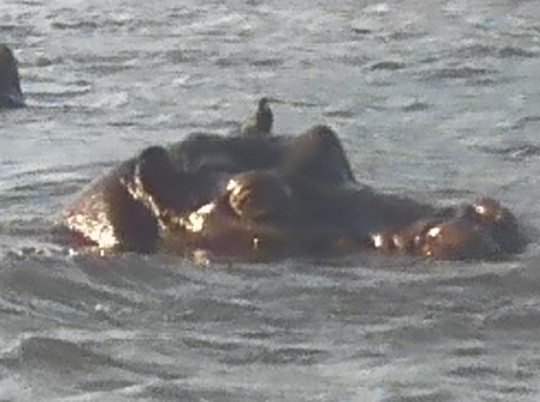



2 notes
·
View notes
Text
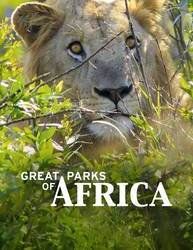
Great Parks of Africa - nature film review
Whether you are considering tourism or seeking understanding about the last great wild places of the world, The Great Parks of Africa is a good place to begin your search. Each episode on the Smithsonian Channel focuses on a single wildlife reserve, each one unique and limitless in beauty. The 11 episode series also cover Kgalagadi Transfrontier and Lower Zambezi Park.
Table Mountain National Park needs no introduction, holding the great Table that overlooks Cape Town, one of the most beautiful cities on Earth. There is much more to this sprawling park that stretches from the famous plateau, across Kirstenbosch Botanical Garden, down a series of mountains dubbed The Twelve Apostles, along Chapman’s Peak Drive, the finest scenic drive in the world, ending in the Cape Peninsula to the Point of Good Hope. ‘Breathtaking’ scarcely does it justice, as it is merely a word. Swept by the frigid Benguela current, upwelling brings nutrients to the surface and creates some of the most productive and diverse oceans in the world.
The soil quality of the land, however is poor, the winds constant, and fires frequent. The animals who live here must struggle to survive such harsh conditions, but that adversity has created the Cape Floral Kingdom, more biologically diverse than a rainforest. Wherever you stand in the heath, you are surrounded by a dozens of species of proteas, ericas, and restios. Walk a hundred meters, and you will find an entirely different community. That diversity is echoed all the way across the Fynbos, and few parks equal Table Mountain for such diversity. Take a trip down to the Cape Point, and experience the collision of two oceans, and you will know the power of nature.
Across the country lies the more tranquil Isimangaliso National Park, a vast area along the KwaZulu-Natal coast dominated by the St Lucia Estuary. The river that flows into this wetland varies in strength, sometimes stopping entirely, allowing the ocean to flow into the estuary, creating a salty lagoon. Few places on earth can rival the sheer diversity of bird life, some of which journey here from Europe to take advantage of the bounty. Leatherback sea turtles also call this place home, and the world’s largest vegetated sand dunes are used by thousands of bird species, crocodiles, and others. The sand is unique, with high levels of titanium, which holds the sun’s heat and that energy fuels the activity of the animals that reside here.
Hippos are present here in the hundreds, filling the estuary river down toward the ocean. At night they journey on land to graze, sometimes going into the town of St Lucia for window shopping. One resident named Vincent for his ear injury has killed people who ran into him at night. None of the residents take this personally, as Vincent’s ilk made their home in the estuary long before humans.
The richness of this land is apparent as offshore whales can be seen in season, Humpbacks making the journey to feeding grounds and breaching constantly on the way. Brimming with elephants, antelope, and rhino, various carnivores following them, and the occasional leopard, Isimangaliso is a truly wild land.
Karoo National Park is a far more quiet place, lying far inland across two mountain ranges and receives very little rainfall. Home to true desert specialists, one can find herds of springbok, gemsbok, and the rare Cape Mountain Zebra. The spectacular mountains and rock formations make for astounding hiking, and one is bound to run into ostrich, black-backed jackal, and itinerate eland. There are more tortoise species here than any other reserve. The critically endangered riverine hare can be found here. The real riches of the park can be found by getting down on a knee - the park is a haven for succulent plants such as living stones. The bitter cold of night brings on a crystalline star-filled sky, which is perfect for star viewing. Just to the west is the small town of Sutherland, home of the largest optical telescope in the southern hemisphere.
The Garden Route chapter covers an embarrassment of riches, as one glides along the southern coast of Africa, battered by the ocean waves. The magnificent De Hoop Nature Reserve begins the trip, which is a treasure of a place that shelters some of the most endangered mammals in the world, including the Bontebok and Cape Mountain Zebra. The Southern Right Whale can be seen along the coast, though is easiest to find in the bay of De Hoop. Further east are the small villages of Witsand, filled with glittering beaches, Stillbaai, Mossel Bay, and George. There are stretches of wilderness between the villages, sheltered forest where the rare Yellowwood tree can still be found. The Cape Floral Kingdom covers most of the remaining undeveloped land. Plettenberg Bay adjacent to an elephant reserve and the Tsitsikamma National Park is an endless paradise. In between is the vacation town of Knysna, at foot of an estuary. Ocean life collides with the riverine forest, filled with pristine beauty.
Augrabies National Park sits in a remote corner of northwestern South Africa along a length of the Orange River. Covering 28000 hectares, the arid park is home to the Quiver Tree and many desert tolerant species like springbok and gemsbok. Along the vegetated Orange River the Cape Clawless Otter and Caracal can be sighted. The true draw of the park is one of the planet’s great waterfalls, the Augrabies, cascading 60 meters in height into a granite basin that runs 240 meters deep.
Kruger’s Pafuri Camp lies in the remote northern section of the Kruger National Park, and has a storied history as an outlaw region. More recently during Apartheid the Makuleke people were forced off the land into a barren region, only later negotiating a return after the first democratic elections. The Makuleke decided not to return, but to keep the land for conservation and staff the park. Today the Pafuri holds 75% of the Kruger’s biodiversity, including the Big Five seen throughout the park, but is best known for having the finest birding in the country. Over 350 species can be seen here on many safari walking trails.
Chobe: Land of Learning covers the National Park of Botswana bordered by the Chobe River, one of the best places to see elephants. The dirt roads and occasional rustic buildings are the only sign humanity even exists, as Chobe is a true wilderness. Elephants herd here in vast numbers, at least 50000 at present. Lions, African Painted Dogs, spotted hyena, cheetah, rhino… a seemingly limitless array of mammals make this park their home. With the languid river, waterbirds such as spoonbills, ibis, storks, ducks, and other waterfowl are common.
Part of this park is the Savuti marsh, the relic of a vast inland lake that has since dried up after the geologic plate on which Botswana sits migrated. The carnivores that patrol this area have been the stuff of legends.
Addo Elephant National Park is the third largest game reserve in South Africa, lying next to Algoa Bay. It is best known for its great elephant herds, but also holds lions, buffalo, leopards, rhinos, and at the coast Southern Right Whales and Great White Sharks. It is also a stronghold for black rhinos, though they tend to avoid people and stay in dense thickets. Spotted hyena are common, African Painted Dogs less so. The star of the park is, of course, the African Elephant, in all its tree engineering glory. Seen with these elephants are enormous amounts of elephant dung, which is in turn processed by a very healthy population of dung beetles. Drive slow - dung beetles have the right of way. Algoa Bay also has one of the few remaining colonies of the critically endangered African Penguin.
Hluhluwe-Umfolozi, located in KwaZulu-Natal, is a nature reserve of great historical importance. Established in 1895, it is the oldest wildlife reserve in South Africa and pioneered animal capture and sustainable utilization in wildlife conservation. At a time when the rhinoceros was being hunted to extinction, the park was a haven. Even today the white rhino has been exterminated from nearly all of its native territory. Today the park has been a true success story for many species struggling elsewhere. Elephants proliferate across the park, to the point where there are too many for the area given their penchant for uprooting trees. This would not be a problem if the elephants could migrate elsewhere, but the park is hemmed in on all sides by humans. Black rhino numbers have done as well as their white relatives, though they are still quite vulnerable. African Painted Dogs normally struggle to establish a foothold within a reserve in competition with lions and against the hostility of people. At Hluhluwe-Umfolozi, the packs have done a brisk business, hunting with wild success and breeding prodigiously enough to create emigration pressure which is released by the Wild Dog Metapopulation project. The genetic variability has been critical to maintaining Painted Dog viability elsewhere in the southern African region.
If you are looking for tourism options, you would do well to visit Hluhluwe-Umfolozi park, combined with the Isimangaliso Park located across the N2 to the east.
3 notes
·
View notes
Text
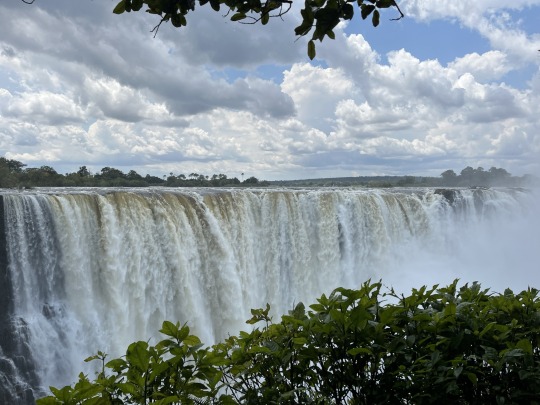

Victoria Falls


My Africa adventure starts in Livingstone, Zambia on the northern side of the Zambezi River across the river from Victoria Falls, Zimbabwe. The Scottish missionary David Livingstone was the first European to identify the falls in 1855 and named them after Queen Victoria. The view of the falls is better from the Zimbabwe side so I crossed the border and had a walking tour of the falls. The water drops about 350 ft and spans about a mile. Flying in to Livingstone in the airplane I could see the mist rising above the horizon from miles away and the local name is “Mosi-oa- Tunya” ( translated as the smoke that thunders). My guide gave me a raincoat when I started the walk and I needed it and more- even on the rim the mist was a total downpour and I was soaked to the skin. I got brave in the afternoon for an ultralight flight over the falls.

Seems like if I’m in Africa I should do a game drive so I hired a guide to take me to a local game reserve/ national park. Lots of zebra, impala, wart hogs, wildebeest and a few white rhino (which are watched closely by armed game wardens to prevent poaching).
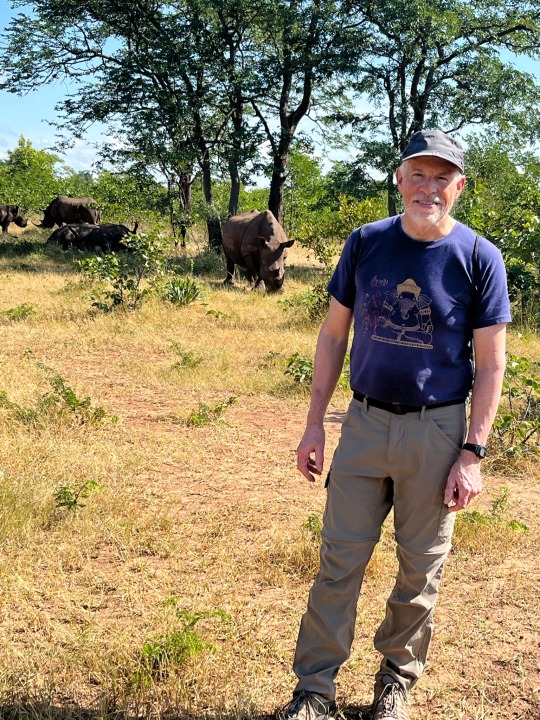
3 notes
·
View notes
Video
youtube
Kazile Island Lodge is situated on a private island on the banks of the Kwando River, within the heart of KAZA. Kazile together with its sister lodge Nambwa are the only lodges to be uniquely situated within the Bwabwata National Park. The Lodge offers thirteen Meru tents nestled within a Mangosteen forest. The tents overlook the Kwando River as well as the expansive floodplains between the Island and the famous Horseshoe Bend. Kazile Island is a special paradise that can only be reached by boat. Here, herds of bualo and elephant traverse the wet Zambezi landscape. Sitatunga, an elusive aquatic antelope, are often spotted along the floodplains and marshes.
---------------------------
Die Kazile Island Lodge liegt auf einer privaten Insel am Ufer des Kwando-Flusses im Herzen von KAZA. Kazile ist zusammen mit seiner Schwesterlodge Nambwa die einzige Lodge, die exzeptionell im Bwabwata Nationalpark liegt. Die Lodge bietet dreizehn Meru-Zelte, eingebettet in einen Mangosteen-Wald. Die Zelte überblicken den Fluss Kwando sowie die weitläufigen Überschwemmungsgebiete zwischen der Insel und dem berühmten Horseshoe Bend. Kazile Island ist ein besonderes Paradies, das nur mit dem Boot zu erreichen ist. Hier durchziehen Büffel- und Elefantenherden die feuchte Sambesi-Landschaft. Sitatunga, eine schwer fassbare Wasserantilope, wird oft entlang der Auen und Sümpfe gesichtet.
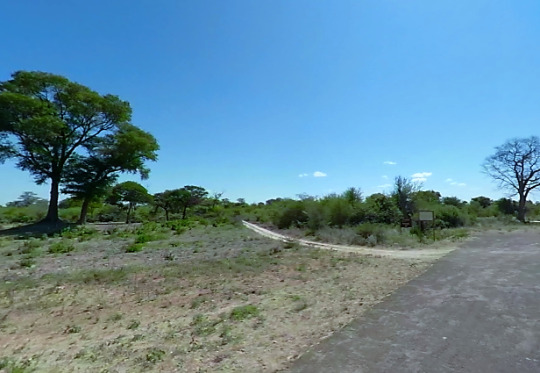
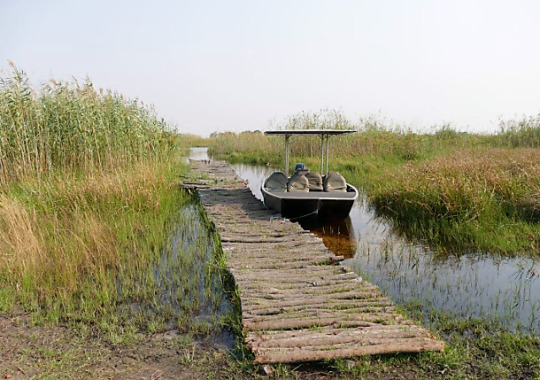
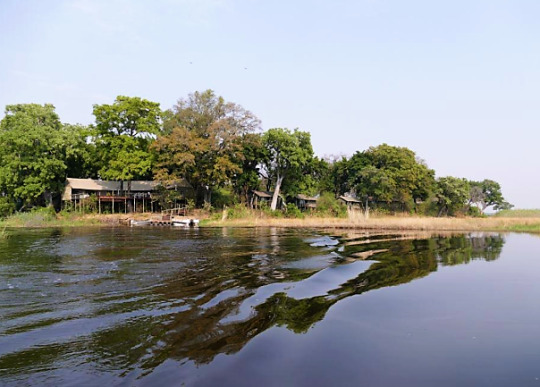



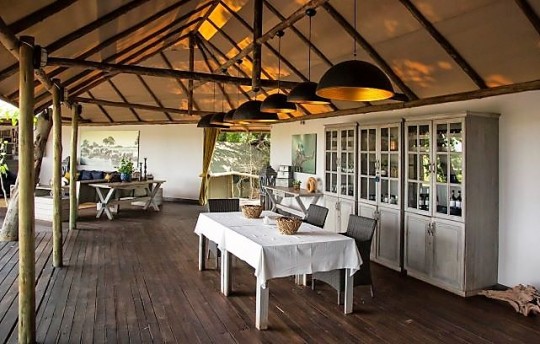

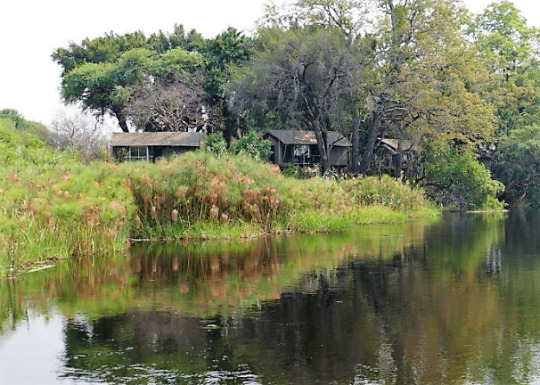

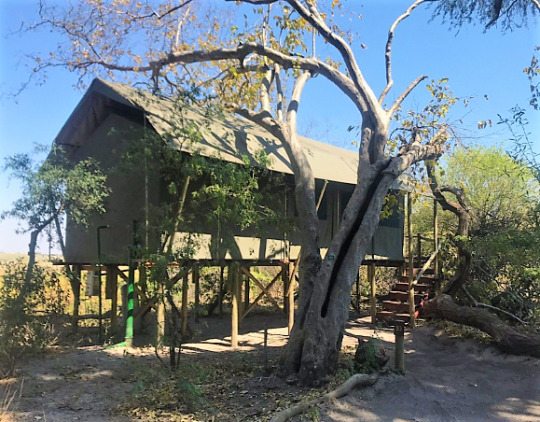
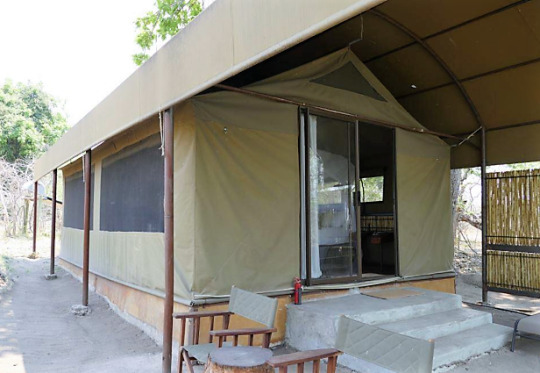


2 notes
·
View notes
Link
0 notes
Text
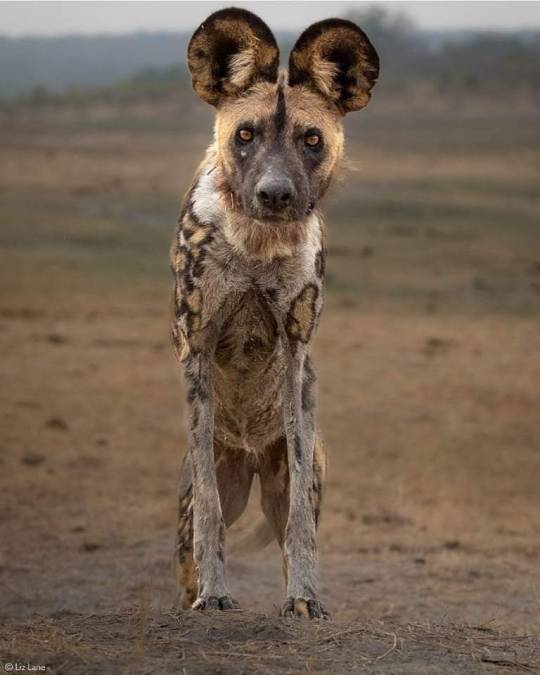
A curious African wild dog (painted wolf) approaches the photographer. Zambezi National Park, Victoria Falls, Zimbabwe
Photo 📸 @Liz Lane
110 notes
·
View notes
Text


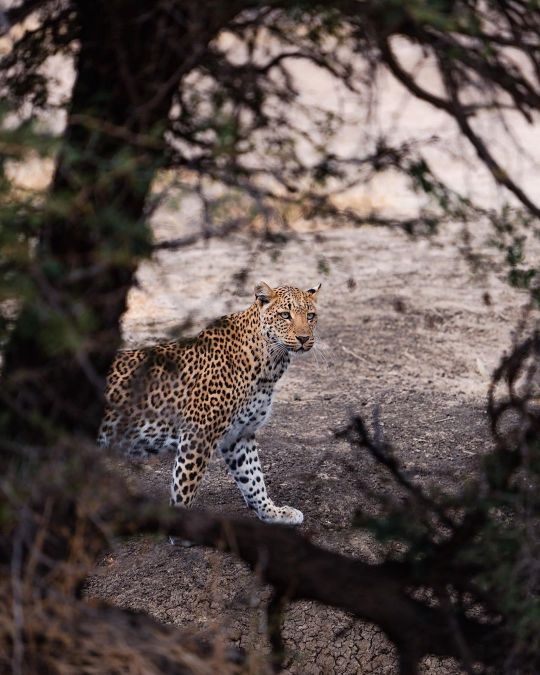
@anabezicamp Lower Zambezi National Park, Zambia
"The Girls 🐆🐆🐆 With Lady, Mai and Scar it’s a family affair."
[Mother Mai and sisters Lady and Scar]
8 notes
·
View notes
Text
10 Best Places in Our South Africa Honeymoon Packages
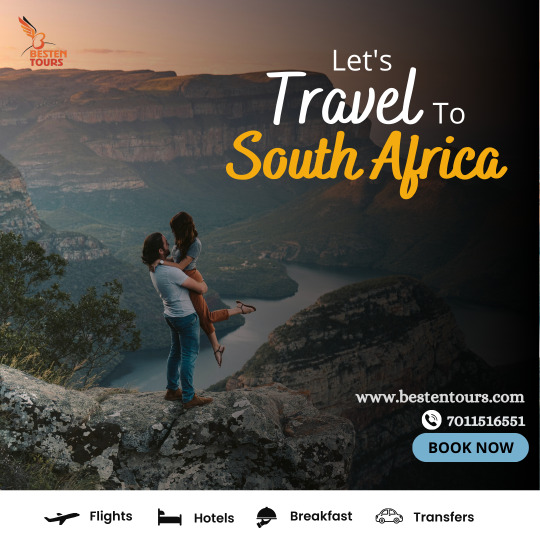
Experiences for honeymooners seeking a truly memorable getaway. In this article, we unveil the top 10 destinations included in our South Africa honeymoon packages, each offering its own unique charm and allure. From thrilling safari adventures to serene beach escapes, let's explore the best that South Africa has to offer for your romantic journey.
Cape Town:
Honeymooners can take a cable car ride to the top of Table Mountain for panoramic views, explore the vibrant V&A Waterfront, or stroll along the picturesque beaches of Camps Bay and Clifton in our South Africa honeymoon packages.
Kruger National Park:
As one of Africa's largest game reserves, Kruger National Park offers an unparalleled wildlife experience. Couples can embark on thrilling game drives to spot the Big Five (lion, elephant, buffalo, leopard, and rhinoceros) in their natural habitat, creating unforgettable memories amidst the African bush.
The Garden Route:
Honeymooners can explore the lush forests of Tsitsikamma, marvel at the dramatic landscapes of the Knysna Heads, and enjoy leisurely drives along the scenic coastal route in our South Africa honeymoon packages.
Stellenbosch Wine Region
For wine-loving couples, a visit to the Stellenbosch wine region is a must. With its rolling vineyards, historic wine estates, and award-winning wines, Stellenbosch offers the perfect setting for romantic wine tastings and cellar tours.
Victoria Falls:
Honeymooners can witness the majestic power of the falls up close, embark on thrilling helicopter rides for panoramic views, or enjoy romantic sunset cruises along the Zambezi River with our South Africa honeymoon packages.
Blyde River Canyon:
Located in Mpumalanga province, Blyde River Canyon is the third largest canyon in the world and offers breathtaking vistas of towering cliffs, lush vegetation, and cascading waterfalls.
Durban's Golden Mile:
Honeymooners can soak up the sun on the beach, indulge in water sports activities, or explore the vibrant beachfront promenade lined with shops, restaurants, and entertainment venues with our South Africa honeymoon packages.
Robben Island:
Steeped in history, Robben Island holds significance as the place where Nelson Mandela was imprisoned for 18 years during the apartheid era.
Drakensberg Mountains:
For couples seeking adventure and outdoor activities, the Drakensberg Mountains offer a playground of rugged beauty and adrenaline-pumping experiences.
Cape Winelands:
Renowned for its picturesque vineyards, historic towns, and world-class wines, the Cape Winelands region is a romantic paradise for wine enthusiasts.
Conclusion:
With its diverse array of landscapes, attractions, and experiences, South Africa offers endless possibilities for a memorable honeymoon getaway. Whether you're seeking adventure, romance, or relaxation, our South Africa honeymoon packages are designed to cater to every couple's desires.
0 notes